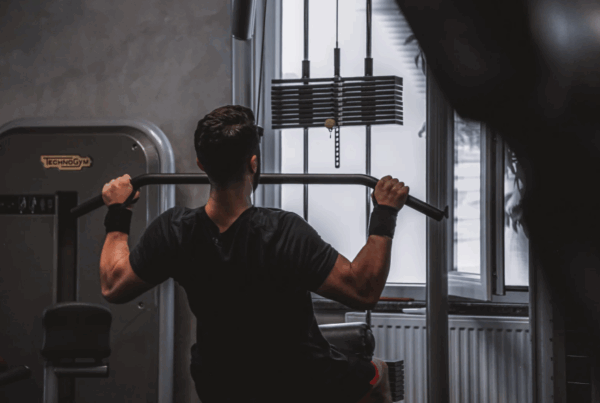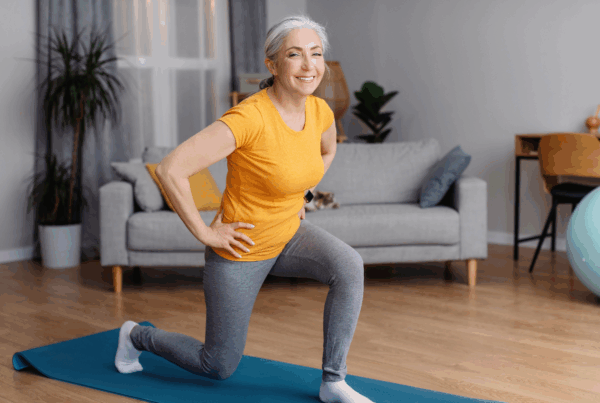Most people know they should improve their sleep. They set out with the goal to “sleep better,” buy a new pillow, go to bed a little earlier, or maybe even cut back on caffeine. But without tracking what’s actually working, these efforts often fade away, and the cycle of poor sleep continues.
As Exercise Physiologists, sleep hygiene is a big focus for us when working with clients (case managers, you would have seen this in our recommendations!). We know that better sleep = better recovery, better function, and better return-to-work outcomes. And since we love objective outcome measures, biometrics have become one of our favorite tools for tracking progress.
And the best part? Most people already have the tools they need to track sleep. Wearable tech was ranked #1 in the ACSM’s 2025 Global Fitness Trends for the second year in a row. The data is already sitting there—it’s just a matter of knowing how to use it.
This blog is a peek behind the curtain—a look at how we use biometrics to improve sleep with clients but also how you can use these tools to start seeing real progress for yourself.
First things first – better goal setting: Why “Sleep More” Isn’t Enough
If you’ve ever tried to improve your sleep, you might have set a goal like “I need to get more sleep” or “I want to feel more rested.” While well-intentioned, these goals lack clarity and are almost impossible to track.
As Exercise Physiologists, we prefer objective goals (those that can be measured)—to help clients structure their sleep improvements. This is where biometrics come in.
Instead of just aiming to sleep more, biometrics allow you to set a clear target:
“I want to increase my REM sleep by 10% over the next month by implementing a wind-down routine and reducing screen time before bed.”
This turns sleep into something tangible—just like you’d track progress in a gym program, you can track progress in your sleep routine too.
Understanding the Numbers: Key Sleep Biometrics
If you’ve ever checked your sleep stats, you’ve probably seen numbers like deep sleep, REM, resting heart rate, or HRV—but what do they actually mean?
✅ Sleep Stages (REM, Deep, Light Sleep)
- What’s ideal? The American Academy of Sleep Medicine recommends adults get 20-25% REM and 15-20% deep sleep.
- What does it mean if REM is low? You might wake up feeling unrefreshed, struggle with memory or focus, or experience high stress levels.
- What does it mean if deep sleep is low? Your body might not be recovering well, leaving you sore and sluggish.
✅ Resting Heart Rate (RHR) Overnight
- What’s ideal? A gradual drop in heart rate while sleeping.
- What does it mean if it stays high? Your body might be stressed, overtrained, or not recovering well.
✅ Heart Rate Variability (HRV)
- What’s ideal? A higher HRV generally indicates better recovery and nervous system balance.
- What does it mean if HRV is low? Your body may be under stress, fatigued, or lacking deep recovery.
✅ Sleep Timing & Consistency (One of the most underrated metrics!)
- What’s ideal? Minimal variation in sleep and wake times—weekend or weekday.
- Why does it matter? Irregular sleep schedules can disrupt circadian rhythm, making it harder to fall and stay asleep.
✅ SpO2 & Respiration Rate: Going Deeper
For some clients, standard sleep metrics don’t tell the whole story. Some wearables track oxygen saturation (SpO2) and respiration rate, which can be particularly useful when working with:
- Clients on specific medications that impact breathing overnight.
- Those with cardiovascular concerns where oxygenation can provide insights into recovery.
- Clients suspected of sleep apnea or other respiratory issues that may need further medical review.
Too much? Not to worry, this is where EPs step in—we don’t just look at the numbers, we interpret them in context with the client’s physiology, condition, and daily demands.
Turning Data Into Action: Using Biometrics to Improve Sleep
Knowing the numbers is just step one—the real progress comes when you use biometrics to track the effectiveness of your sleep strategies.
Example:
Sally feels exhausted despite getting 8+ hours of sleep every night. When we check her biometrics, we see:
❌ Low REM sleep
❌ High heart rate overnight (especially in the first half of sleep)
Through discussion, we find out that she clears her emails late into the night, believing it helps her stay ahead for the next day.
The strategy?
✔ Implementing a wind-down routine with breathwork and screen-free time.
✔ Cutting caffeine after 12 PM.
✔ Watching her biometrics for changes over time—seeing if HR lowers and REM improves.
This data-driven approach helps Sally objectively measure whether her sleep is improving, not just rely on how she “feels” in the morning.
Long-Term Sleep Tracking: The Power of Consistency
One of the biggest mistakes people make is expecting immediate results. Sleep is not something that changes overnight (pun intended!).
The real power of biometrics comes from long-term tracking—seeing how small changes add up over weeks and months.
Some ways to use biometric tracking for long-term improvements:
- Monitor progress over a month, not just one night—look for trends, not daily fluctuations.
- Adjust based on feedback—if you don’t see improvement, tweak one variable at a time (e.g., stress, caffeine, bedtime routine).
This big-picture approach ensures that your sleep strategies are actually working rather than relying on short-term guesses.
Final Thoughts
At Specialised Health, we know that sleep and recovery are just as important as movement when it comes to function, performance, and return to work success. If poor sleep or fatigue is impacting your client’s ability to work, recover, or reenter the workforce, an EP can help. Get in touch to see how we can turn sleep from a barrier into a stepping stone for better health and function.
Author: Tessa Nielsen



